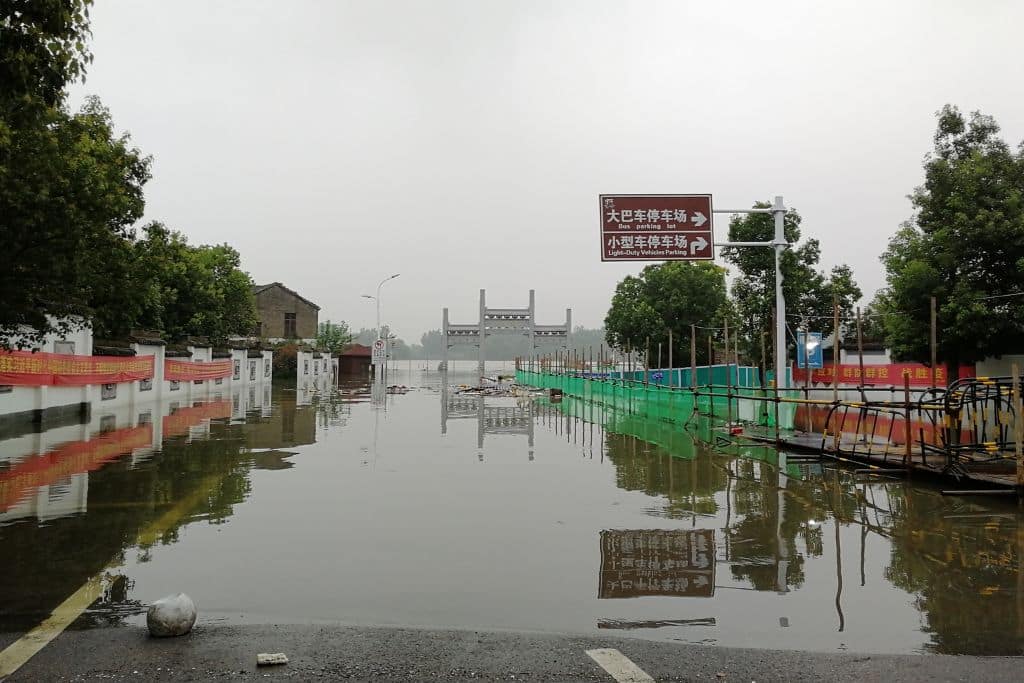Dozens of people have died and millions have been displaced in recent weeks after torrential rain and extreme flooding hit Pakistan, India, Japan, China, and the northeastern US.
—
Heavy rainfall and storms have triggered extreme flooding in several regions across the world, killing and displacing hundreds of people and wreaking havoc on entire cities, as experts warn that storms are only expected to worsen as the planet warms – especially in countries that bear very little responsibility for pollution.
What Is Happening?
A hefty monsoon season has triggered devastating floods in northern India over the past four days. At least 49 people died since the weekend amid landslides and flash floods that lasted three days, while the capital New Delhi has ordered the closure of schools.
In Pakistan, at least 50 people, including eight children, have lost their lives since the monsoon season began on June 25, according to the national disaster management. The majority of deaths occurred in eastern Punjab due to electrocution and building collapses.
While heavy rains are a normal occurrence in this part of the world during summer months, experts agree that climate change is increasing the frequency and severity of these events. Last year, Pakistan experienced up to eight times its usual rainfall, triggering one of the worst and most destructive floods the country has ever experienced. More than 1,000 people lost their lives and nearly 1.7 homes were damaged, displacing over 33 million people – about 15% of the population.
Dr. Asif Khan Khattak, a professor at the University of Peshawar’s Department of Environmental Science, told Earth.Org that climate change is the most likely culprit behind the sudden, extreme flooding that Pakistan has suffered.
Torrential rain also pounded southwest Japan, leading to flash flooding and mudslides that left at least six people dead and at least six others missing on Monday. Several rivers in northern Kyushu – Japan’s third-largest island – flooded as the region experienced record levels of rain. The top forecaster at the Japan Meteorological Agency said that part of the island had endured its “heaviest rain ever experienced“.
In China, an unusually prolonged heatwave last week – which brought historic high temperatures in the capital Beijing –preceded heavy rains in the country’s South, which killed at least 15 and displaced tens of thousands of people. While seasonal flooding is a regular occurrence in China, this year’s events are much longer and more intense, with some northern regions experiencing the worst floods in over 50 years.
In Northeast US, relentless rain led to destructive floods in New York’s Hudson Valley and in Vermont washed out roads and prompted evacuations and the halting of airline travel. At least 117 people were rescued in Vermont after floods trapped them in their cars and homes on Monday, while a woman died in the Hudson Valley as she tried to escape her flooded home, the Associated Press reported. Extreme weather events in the US last year resulted in damages for $165 billion.
You might also like: The Negative Impacts of Flooding on the Planet
What’s Behind Extreme Flooding Events?
According to atmospheric scientists, the destructive flooding events that have wreaked havoc across the globe are a direct result of climate change, as storms like these typically form in warmer atmosphere, which holds more moisture and thus more rainfall. Additional warming is only going to make it worse.
“Warm air expands and cool air contracts. You can think of it as a balloon – when it’s heated the volume is going to get larger, so therefore it can hold more moisture,” said Rodney Wynn, a meteorologist at the National Weather Service in Tampa Bay.
Every 1C (1.8F) of additional warming equals to 7% more moisture in the atmosphere.
Latest measurements show that the planet has already warmed by 1.1C (1.9F) since the Industrial Revolution. In May, the UN warned that the Earth is “more likely than not” to breach the 1.5C warming threshold set out in the 2015 Paris Agreement, owing to an imminent El Niño weather pattern and a rise in anthropogenic carbon emissions.
“The bulk of the emissions have come from the industrial Western nations,” Gavin Schmidt, a climatologist and the director of the NASA Goddard Institute for Space Studies, told the Associated Press. “The bulk of the impacts are happening in places that don’t have good infrastructure, that are less prepared for weather extremes and have no real ways to manage this.”
Limiting global temperature rise to 1.5C is still possible, though immediate action is needed as we are rapidly running out of time, as Monday’s milestone reminded us. The upcoming UN climate summit in Dubai – COP28 – might be the world’s last chance to change the course of history.
Featured image: Wikimedia Common
You might also like: Earth Records Hottest Day Ever Amid Rising Greenhouse Gas Emissions


















